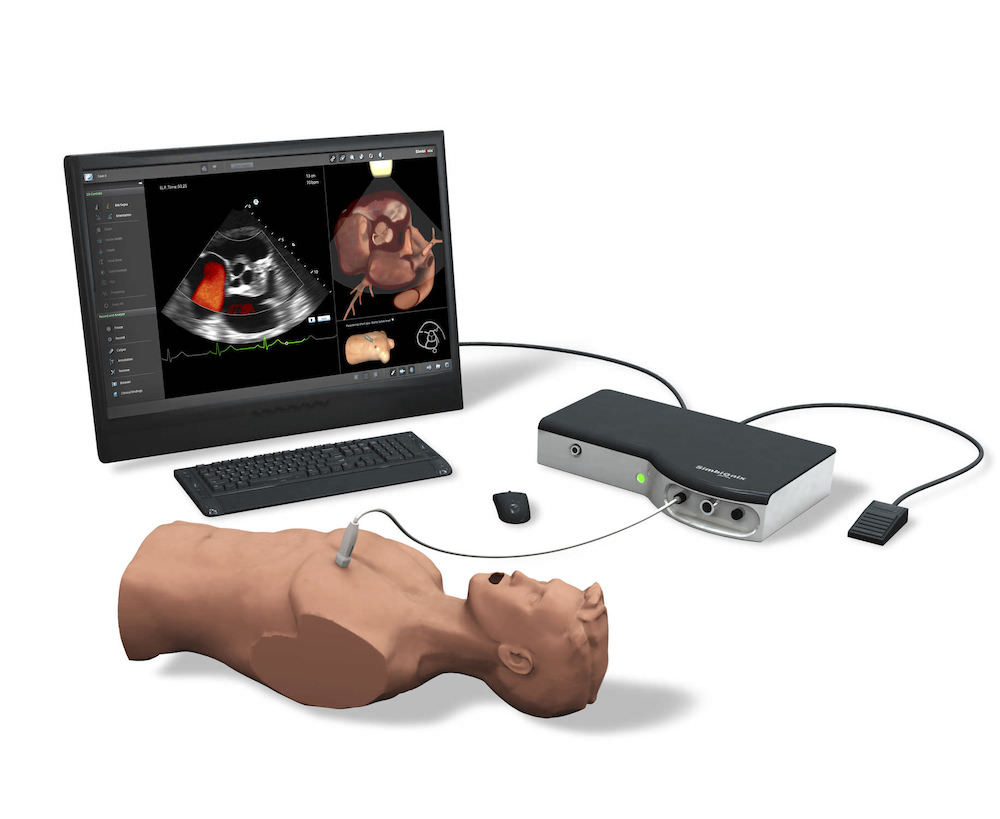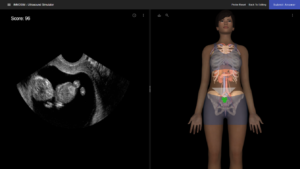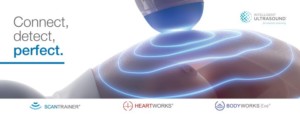Ultrasound Simulator
An Ultrasound Simulator is a medical simulation training tool that enables educators and learners to practice diagnostic, therapeutic and surgical applications as they relate to imaging interventions. A key advantage of using ultrasound simulation is that the practice makes advanced visualization, case databases and automatically generated feedback possible.
In achieving these educational outcomes, computer-based simulators mimic the ultrasound image produced within a computer. The methods to simulate ultrasound images can be categorized into interpolative, generative image-based and generative model-based methods. Clinical Simulation has been shown to reduce costs and medical errors while improving learning, training and patient safety outcomes.
The most common method to simulate 2-dimensional (2-D) ultrasound images is interpolation from 3-dimensional (3-D) volumes that have been acquired from real patients. However, for non–real-time applications, such as in the case of transducer design, more generative ultrasound simulation methods have been developed for use. These more generative ultrasound simulation methods manipulate wave propagation on 3-D volumes (including CT or MR volumes).
Sponsored Content:
Alternatively, generative model-based ultrasound simulators create an image by extracting a 2-D slice from the model and texturizing it. Although this method is very appealing for generating and depicting cases involving different pathologies, modeling and confirming that the model is correct can present challenges, according to The Journal of the Society for Simulation in Healthcare.
Overall, the main advantage of ultrasound simulators is that they provide new, innovative ways for learners to build up mental models. Yet, the most important feature of an ultrasound simulator is to provide feedback, which conforms to the concept of a mental model that has to be updated. Another aspect that has been found critical across the realm of medical simulators is the ability to provide a range of difficulty levels for users with different skills.
Introducing such novel training methods that are only possible using computer-based simulation are also thought to help reduce costs, while increasing the quality of a training module. Today, a few companies have taken on the challenge of implementing these clinical simulation technologies and offering them to learners, facilities and systems. Here are examples of a few products on the market:
CAE Healthcare Ultrasound Simulators
Sponsored Content:
CAE Healthcare, a medical simulation product training company, delivers educational tools that help healthcare professionals provide safe, high quality patient care. The company, which has a North American headquarters in Sarasota, Fla., offers end-to-end spectrum of simulation solutions–including its CAE Blue Phantom simulator or task trainer, CAE Vimedix Ob/Gyn simulator and CAE Vimedix Ob/Gyn trainer.
The company describes these simulators as “vascular access training phantoms that mimic soft human tissue and vascular structures.” These “phantoms” allow ultrasound learners to train in needle-guided procedures without exposing actual patients to the pain and discomfort that is often associated with repeated attempts at proper needle insertion.
To gain appropriate benefit from such training, the CAE Blue Phantom simulators or task trainers in use need to be both durable and reliable. They also needed to have the capacity to withstand repeated punctures without suffering a reduction in either product usefulness or performance. When ultrasound-guided intervention procedures are performed using a CAE Blue Phantom simulator or task trainer, the simulated skin tissue will ultimately “self-heal.” This means that the simulation manikin will automatically seal itself around the puncture area. This process is used to eliminate the risk of leakage associated with reducing the appearance of damage.
According to CAE, a study conducted in partnership with the U.S. government, and published in the Western Journal of Emergency Medicine, showed that users can expect any Blue Phantom task trainer model to endure 1,000 needle attempts or more — without significant degradation in the integrity of the simulated training model, the simulated vessel, or the ultrasound image produced.
Alternatively, the CAE Vimedix ultrasound simulator is also available to help learners master the skills they need to perform delicate ultrasound procedures with accuracy and competency. The CAE Vimedix Ob/Gyn ultrasound simulator operates on a manikin/computer-based system which allows a realistic replication of both psychomotor and cognitive skills needed for effective ultrasound training.
With over 50 pathologies and updated, self-directed instructional content, the CAE Vimedix Ob/Gyn trainer additionally allows for Target Cut Plane exercises that provide accurate reference guides and images to aid learners in correct probe positioning.
Across the spectrum of users, the Vimedix is Microsoft HoloLens-compatible is better equipped for more enhanced practice through augmented reality. This gives learners the opportunity to accelerate training with the most innovative, comprehensive and easy-to-use ultrasound simulator of its kind.
The SonoSim Ultrasound Training Solution
SonoSim is an integrated ultrasound training solution company that offers engaging didactic courses, hands-on training and knowledge assessment. Headquartered in Santa Monica, Cal., the company developed the ultrasound simulator known as the SonoSim Ultrasound Training Solution.
This product instantly transforms live volunteers and mannequins into ultrasound training cases with real pathologic conditions. This is possible because all of the cases are obtained from real patients, allowing for on-demand, authentic scanning experiences. The technology replicates the exact tactile experience of using an actual ultrasound probe to scan a real patient, according to SonoSim.
Leading to successful learning outcomes, this simulator helps trainees overcomes long-standing barriers to the standard ultrasound education. The SonoSim Ultrasound Training Solution does this by providing integrated hands-on ultrasound training, didactic instruction and assessment, while delivering comprehensive ultrasound training at any time and location. Compatible with both Windows and Mac platforms, the SonoSim Ultrasound Training Solution additionally provides educators and learners with virtual access to thousands of patients on-demand.
SonoSim Courses are delivered in an interactive multimedia format using still and dynamic ultrasound imagery, audio narration, computer graphic imagery, and animation. The courses are developed by leading experts in ultrasonography and medical education and delivered online. For those wishing to obtain CME credit, this can be achieved by successfully completing designated modules.
During each lesson, a participant will receive immediate probe-positioning guidance and expert feedback while scanning real-patient cases. Hands-on training cases can also be saved, annotated, and archived for performance review. Simply insert the SonoSim Probe into a USB port and instantly transform any personal computer into a bedside ultrasound-training environment.
Additional Ultrasound Simulator Manufacturers Include:
- Simulab
- Intelligent Ultrasound (formerly Medaphor)
- SonoSim
- Simbionix (a 3D Systems company)
- More coming soon!
Additional Ultrasound Simulators can be found by completing our “Find Vendor Form”!
Ultrasound Simulators Latest News
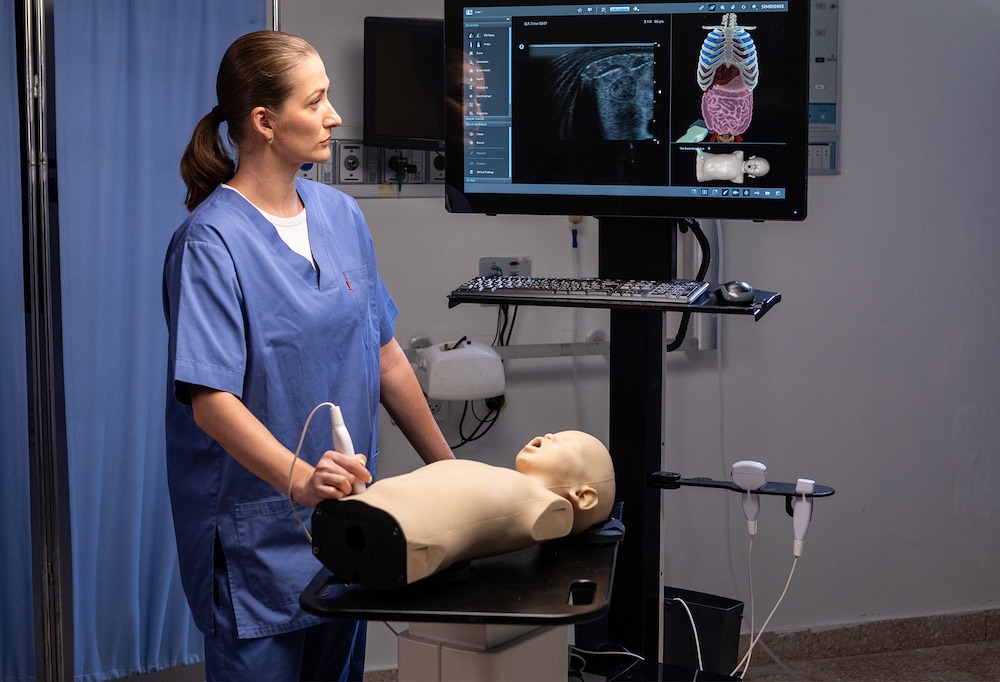
Surgical Science Launches Pediatric Simulator Add-On to Ultrasound Mentor
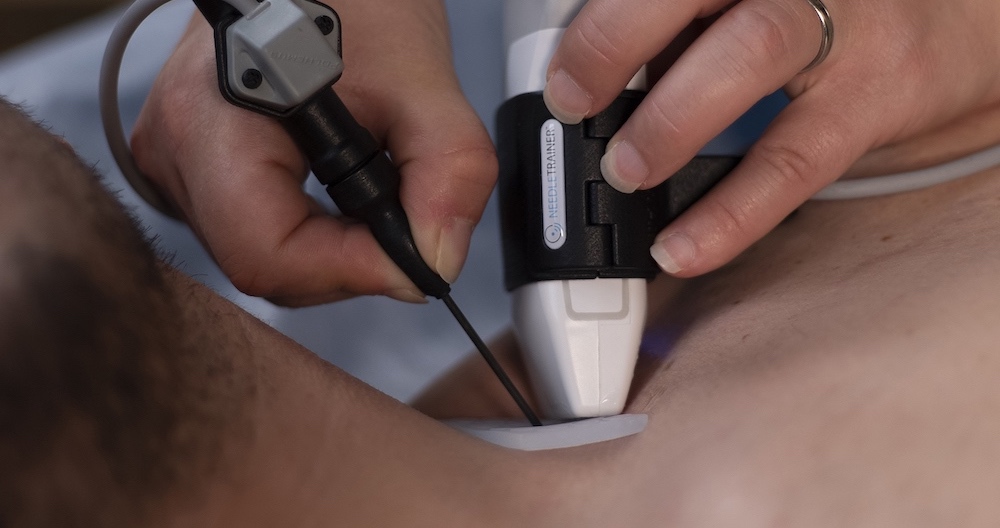
NeedleTrainer: Realistic, Effective and Safe Ultrasound-Guided Needling Simulator from Intelligent Ultrasound
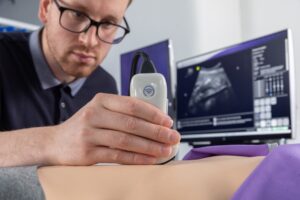
Teaching Ultrasound to Multiple Specialties Quickly, Safely, and Effectively
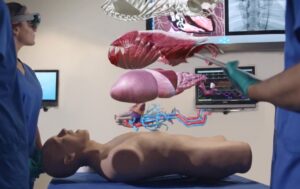
Honor Medical Ultrasound Awareness Month with CAE Healthcare Ultrasound Simulation Solutions

CAE Clinical Digital Learning Solutions Expand Educational Capabilities

IMSH 2021: CAE Healthcare Immersive Training Solutions Highlights
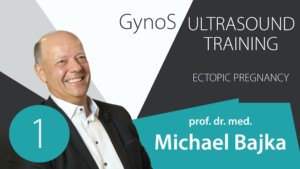
VirtaMed Launches Ectopic Pregnancy Clinical Simulation Video Series
Sponsored Content:



